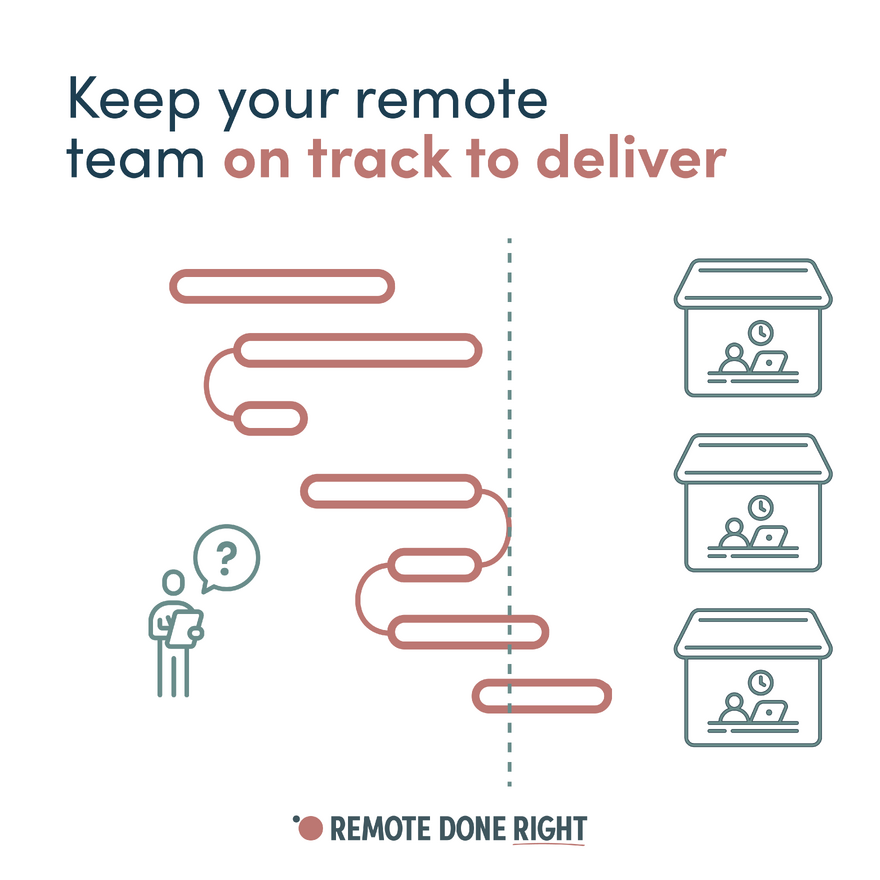Remote team missing deadlines? Go back to basics.

Don’t get hung up on the challenges of remote leadership – the rules are the same. Pave the way to success by making it clear what people have to do, when they have to do it and then proactively monitor and review progress.
Set realistic deadlines
Successfully managing remote projects begins with setting realistic deadlines. To do this, it’s essential to assess the project scope and complexity. Take the time to understand all the tasks involved and how long each one will take. This helps in creating a timeline that is both achievable and practical.
When team members contribute to setting deadlines, they are more likely to be committed to meeting them. Taking a collaborative approach ensures that everyone is aware of the expectations and feels responsible for their part in the project.
Considering time zones and work hours is particularly important in remote projects. Unlike traditional office settings, remote teams often span multiple time zones. Make sure to account for these differences to ensure that deadlines are fair and feasible for all team members.
Find and use the right tools
Project management software options like Asana, Trello and Monday.com can help in organising tasks, setting deadlines, and tracking progress. These tools provide a centralised platform where team members can collaborate and stay updated on project status.
Time-tracking applications such as Toggl and Clockify can help in monitoring how much time is spent on each task, ensuring that team members are staying on track and deadlines are being met.
Collaboration platforms like Slack and Microsoft Teams facilitate communication and information sharing. These platforms enable team members to discuss project details, share files, and provide updates, making it easier to stay connected and aligned.
Communicate clearly
Articulate deadlines and expectations clearly to avoid any misunderstandings. Written communication should be straightforward and to the point, leaving no room for ambiguity.
Regular check-ins and updates are essential to keep everyone on the same page. Schedule weekly or bi-weekly meetings to discuss progress, address any issues, and provide feedback. This helps in maintaining momentum and ensuring that deadlines are met. Different team members may prefer different methods of communication, so use a combination of emails, instant messaging, and video calls to ensure that everyone is reached effectively.
Handle delays and setbacks proactively
Delays and setbacks are inevitable in any project, but identifying potential risks early on can help mitigate their impact. Conduct risk assessments at the start of the project to anticipate any challenges that may arise.
Having a contingency plan in place ensures that the project can continue moving forward even when unexpected issues occur. This proactive approach helps in minimising disruptions and keeping the project on track.
Keep stakeholders up to date on the status of the project, the challenges being faced, and the steps being taken to address them. Transparent communication builds trust and keeps everyone aligned.
Regularly review project timelines
Schedule periodic reviews to assess the project’s progress, identify any issues, and make necessary adjustments to the timeline. Be open to making changes if the initial deadlines prove to be unrealistic. This flexibility allows the team to work more efficiently and achieve better results.
Learning from past projects is invaluable for improving future planning. Analyse what worked well and what didn’t, and apply these insights to future projects. This continuous improvement approach helps in refining your project management strategies and achieving greater success.
Unlock the full potential of remote work for you and your team, visit our downloads page to access free remote working resources and subscribe to our newsletter to receive insights, resources and tools in your inbox each month.
